Ford Death Watch 15: Those Who Do Not Learn From History
The new CEO of the company walked into the boardroom. The mood was grim. Recruited from another company in another industry just a few months previously, he carried bleak news. The automaker had just reported the largest third quarter loss in recent history. Their most profitable products, which had been flying off dealer lots, were dead in the water. Strikes at suppliers had crippled production of the few products that sold well. Market share was evaporating, and operations in Europe were drowning in red ink. Worst of all, recent downgrading of their bonds had hurt the profitability of their all-important finance unit, which had underwritten the car business for years. It was time for some bold moves.
The board of directors listened to the bad news as the patriarch of the founding family stared down at them from a portrait on the wall. When the CEO finished, the directors mulled over their options. No matter what course they chose, the lives of thousands of employees would be affected. The economic health of the company’s home town depended on them. It was a heavy burden.
The year was 1963. The company was Studebaker. The CEO was Sherwood Egbert, formerly of McCulloch Chainsaws. After due consideration, the directors decided that there was no economic justification for remaining in the car business. They initiated plans to ease the company out of the automobile industry and expand its portfolio of profitable businesses. When the last Studebaker eventually rolled off the assembly line, the company’s stock almost doubled. Studebaker went on to become a very profitable company, eventually merging with other conglomerates.
Four-and-a-half decades later, Ford stands at the same crossroads. The Blue Oval just reported the worst third quarter earnings in over a decade-and-a-half. Market share has dropped dramatically, by over a third. Consumers have deserted the profitable trucks and SUVs that drove Ford to the heights of profitability. In the meantime, buyers are lined up none deep for the Ford 500 and its clone, the Mercury Montego. Overseas losses continue, with the Premium Automotive Group losing an astounding $600m.
Wall Street’s lack of confidence in Ford’s automotive endeavors has resulted in the continued downgrading of Ford’s bonds. This raises the cost of capital to Ford Financial, which is the profit engine of the Ford Motor Company. Without profits from Financial, Ford would not be a financially tenable organization. This last quarter, profits from Ford Financial were off about $400m, mainly due to the higher cost of borrowing.
The solutions to Ford Financial’s profit problems leave Ford with a Hobson’s choice. If Ford sells a controlling share of Financial to an outside company (a la GM and Cerberus), the credit ratings of Financial’s bonds would rise dramatically. But Ford would then reap only half, or less, of the profits. And it’s entirely possible that the finance unit’s new owners might find better uses for those profits than propping up FoMoCo.
If, on the other hand, Ford allows the deficit-ridden automobile operations to continue to drag down the credit ratings of Ford Financial, less and less cash from Financial will be available to prop up Ford. Declining profits will decrease the value of Ford Financial. If and when Ford is forced to sell it off just to meet the payroll, the finance company will be worth a fraction of its current fair market value.
And then there’s Ford’s seriously deteriorating relationship with its suppliers. A large number of companies that Ford relies on for continued production of its automotive products are in bankruptcy: Delphi, Tower, Dana, Dura, Federal Mogul and Collins & Aikman; to name a few. A failure of any of these mission critical manufacturers would cause an immediate shutdown of one or more of Ford’s production plants. Ford’s relentless pressure on prices has weakened its supply base to the point where continued and reliable production is a tenuous supposition.
Recently, Ford had to shut down its Fusion/Milan/MKZ plant, when Collins and Aikman (C&A) refused (for one shift) to supply parts at a loss. C&A, bankrupt, felt they simply had to have more money to cover their costs. Widely but silently applauded in the supplier community, the move could well be the first in a series of similar supplier “strikes." Just when Ford needs more cost savings, their own supplier base, already destitute, will demand, and get, higher prices. Ford has already deplored the “serious harm to the relationship” caused by C&A’s actions, but it’s clear that relationships with Ford don’t pay the bills.
In response to these issues, Ford’s new CEO Alan Mulally is calling for "incremental continuous improvement.” Meanwhile, Ford’s board of directors is heading towards a sad recognition of the truth: the automaker doesn’t have a viable plan for making cars and trucks at a profit, or the time to devise one. At that point, it’s only a matter of time before Ford thinks the unthinkable: following Studebaker into becoming a multi-national financial company.
More by Bob Elton
Latest Car Reviews
Read moreLatest Product Reviews
Read moreRecent Comments
- Master Baiter I thought we wanted high oil prices to reduce consumption, to save the planet from climate change. Make up your minds, Democrats.
- Teddyc73 Oh look dull grey with black wheels. How original.
- Teddyc73 "Matte paint looks good on this car." No it doesn't. It doesn't look good on any car. From the Nissan Versa I rented all the up to this monstrosity. This paint trend needs to die before out roads are awash with grey vehicles with black wheels. Why are people such lemmings lacking in individuality? Come on people, embrace color.
- Flashindapan Will I miss the Malibu, no. Will I miss one less midsize sedan that’s comfortable, reliable and reasonably priced, yes.
- Theflyersfan I used to love the 7-series. One of those aspirational luxury cars. And then I parked right next to one of the new ones just over the weekend. And that love went away. Honestly, if this is what the Chinese market thinks is luxury, let them have it. Because, and I'll be reserved here, this is one butt-ugly, mutha f'n, unholy trainwreck of a design. There has to be an excellent car under all of the grotesque and overdone bodywork. What were they thinking? Luxury is a feeling. It's the soft leather seats. It's the solid door thunk. It's groundbreaking engineering (that hopefully holds up.) It's a presence that oozes "I have arrived," not screaming "LOOK AT ME EVERYONE!!!" The latter is the yahoo who just won $1,000,000 off of a scratch-off and blows it on extra chrome and a dozen light bars on a new F150. It isn't six feet of screens, a dozen suspension settings that don't feel right, and no steering feel. It also isn't a design that is going to be so dated looking in five years that no one is going to want to touch it. Didn't BMW learn anything from the Bangle-butt backlash of 2002?



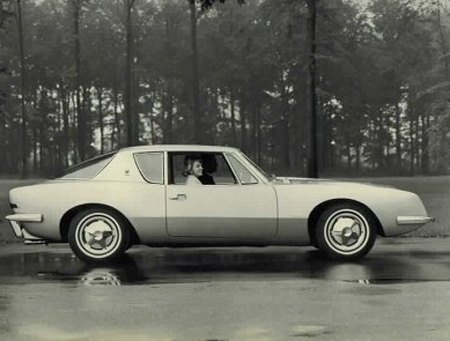













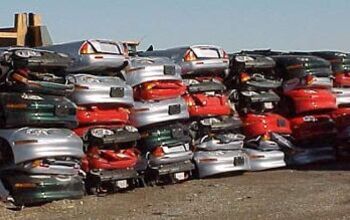
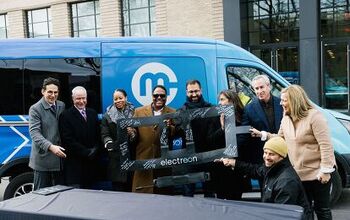









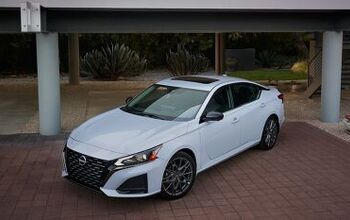
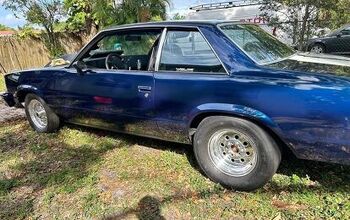
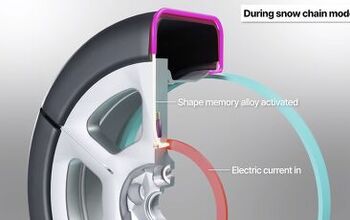

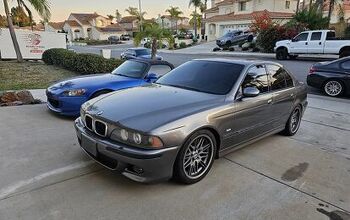
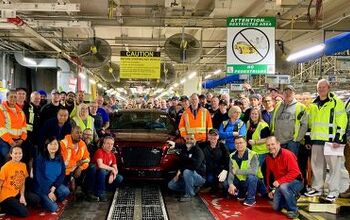
Comments
Join the conversation
If Ford is $8 billion in R&D and Toyota $7 billion, then I think Ford must be using 'cipherin' about like Jethro Bodine, Enron, GM or Delphi. Results are what count, right? Yeah, no way is DORF ("Ford spelled sideways is DORF") spending $8 billion on R&D. Just think - in a few years we may all be posting on similar stories about the demise of GM, Ford and DCX. Sad, isn't it?
[...] Check out this read from Bob Elton: Ford Death Watch 15: Those who do not learn from history. It’s heavy. But very, very plausable. We still think Ford is going to go private before it does anything as drastic as Mr. Elton suggests. We’re wrong about everything, however, so don’t go betting on us. We were 100% positive Alison would have liked the thing. With the stuff. On the side. [...]